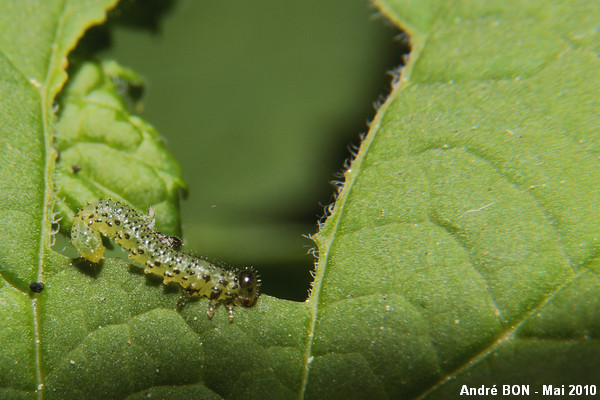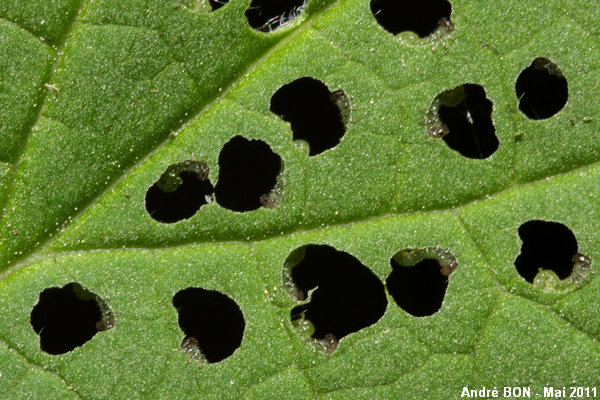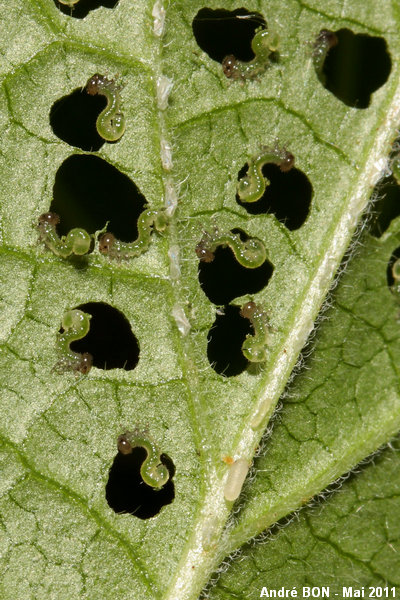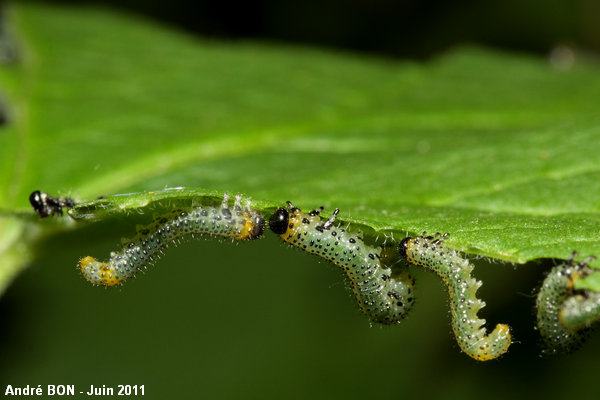



| Gooseberry Sawfly (Nematus ribesii (Scopoli, 1763)) |




|
|
Scientific name: Nematus ribesii (Scopoli, 1763) Common name: Gooseberry Sawfly French name: Tenthrède du groseillier Order: Hymenoptera Family: Tenthredinidae Wingspan : Body size: 6 to 8 mm; Wingspan: 14 to 16 mm. Biotope: Gardens. Geographic area: Europe. Observation period : April to September. There are up to 4 broods per year. |
Like other members of the tenthredinidae family, Gooseberry Sawflies have long and thin antennae of 9 articles. Females have a black head and upper side of the thorax with a completely yellow abdomen. Males are completely black. The legs are pale yellow. A close look at the veins of the wings is required to confirm the identification of the species. The green yellow larvae, with black dots, are easier to tell apart. They have 6 pairs of false legs and raise the rear end of their body up when they feel threatened. They make holes in Gooseberry leaves and eat them by enlarging these holes. They can cause important damage. |
| [To know more about the Gooseberry Sawfly] [Next picture] [Top] |

|
I have photographed many tenthredinidae larvae without being able to tell the species apart. At least here is one where I think that I can do it. A Gooseberry leaf with a hole being enlarged by a green tenthredinidae larva with black dots. Here are keys that enable to tell the Gooseberry Sawfly species apart. I have only seen one larva and I have been able to enjoy eating my gooseberries in 2010. |
| [To know more about the Gooseberry Sawfly] [Next picture] [Previous picture] [Top] |

|
Something is moving this year on the Gooseberry leaves. My attention has been attracted, here, by one leaf perforated with very small holes, very close to each other. |
| [To know more about the Gooseberry Sawfly] [Next picture] [Previous picture] [Top] |

|
A view of the under side of the leaf provides a better view of the Gooseberry Sawfly larvae at the beginning of their development cycle. The remains of the eggs are visible, aligned under the veins of the leaf. There is still one which is not yet hatched at the bottom of the picture. |
| [To know more about the Gooseberry Sawfly] [Previous picture] [Top] |

|
I am having almost as much fun looking at Gooseberry Sawflies growing than eating Gooseberries. And furthermore, their presence does not seem to have had a significant impact on the crop. |